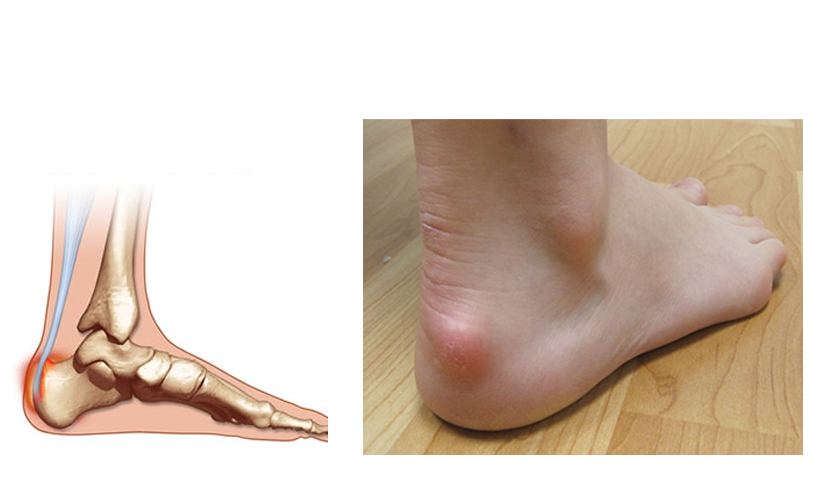
Heel pain can make daily activities very difficult. One common cause of heel pain is Haglund’s deformity. This condition happens when a bony bump forms at the back of your heel. It can become swollen, red, and very painful, especially when you wear tight shoes.
Many people do not realize they have Haglund’s deformity until the pain gets worse. That is why early care and treatment are very important. With proper steps, you can manage the pain and avoid further problems. Whether you are walking, running, or standing, healthy heels are important for your overall comfort.
If you are looking for expert help, you can find great Foot care in Edinburgh. Professionals can offer the right advice and treatments to reduce pain and improve your heel’s health. They can also suggest better shoe choices, exercises, and sometimes simple treatments that can bring fast relief.
Understanding the causes and symptoms early can help you take better care of your feet. Moreover, following a good foot care routine can prevent serious issues later on. Always remember, healthy feet mean a more active and pain-free life.
Now, let’s explore the important areas to help you deal with Haglund’s deformity below:
-
Understanding Haglund’s
-
Common Causes Explained
-
Symptoms You Should Know
-
Effective Relief Methods
-
Professional Care Options
Understanding Haglund’s
Haglund’s deformity is a condition where a bony bump forms at the back of your heel. This bump can rub against your shoes and cause pain, swelling, and redness. Often, people do not notice it early because the symptoms start slowly.
However, over time, the pain becomes worse, especially with tight shoes or heavy walking. Many factors like foot shape, footwear, and even walking style can cause Haglund’s deformity. Therefore, it is very important to know about this condition early.
Learning more about Haglund’s deformity can help you spot the problem faster. Early care can stop the condition from getting worse. Additionally, good advice from foot specialists can guide you towards better shoe choices and treatments.
Common Causes Explained
Many different things can cause Haglund’s deformity. First of all, wearing shoes with stiff backs, like high heels, is a major reason. These shoes rub against the heel and cause the bone to grow outward.
Moreover, if you have a naturally high arch or walk in a certain way, you are also more at risk. Sometimes, genetics can also play a role. If your family members have foot problems, you might develop them too.
Other times, overuse from running or standing for long periods can lead to Haglund’s deformity. Therefore, choosing the right shoes and taking breaks can help protect your feet.
If you live an active lifestyle, it is important to check your foot health often. Even small pains should not be ignored.
Symptoms You Should Know
Knowing the symptoms of Haglund’s deformity is very important. Early signs include pain at the back of the heel, swelling, and redness. You might also notice a bump forming, which feels sore when touched.
Additionally, you may feel discomfort when wearing tight shoes or after walking a lot. Sometimes, the area can even feel warm or look bruised. Therefore, if you notice these signs, it is important to act quickly.
Ignoring the symptoms can make the condition worse and harder to treat. Instead, paying attention to the first signs can help you get the right treatment early.
Also, regular Foot care in Edinburgh can be very helpful. Skilled specialists can check your feet, suggest better footwear, and offer treatments to ease the pain.
Effective Relief Methods
Thankfully, many simple methods can help relieve Haglund’s deformity. First, wearing soft-backed shoes can reduce rubbing on the heel. Shoes with a soft heel area or open backs are a great choice.
Additionally, icing the painful area can lower swelling and ease discomfort. It is also helpful to stretch the Achilles tendon daily. This can make the area around the heel less tight and painful.
Some people also use heel pads or cushions inside their shoes for extra comfort. If home methods are not enough, a specialist might suggest physical therapy or other simple treatments.
Moreover, regular checkups for Foot care in Edinburgh can help you stay on track with recovery. Expert advice can save you from long-term damage.
With the right care, you can start feeling better and walk without pain again. Finally, let’s now explore why professional care is often the best option for lasting recovery.
Professional Care Options
Sometimes, home care is not enough to fully heal Haglund’s deformity. In these cases, professional care becomes very important. Experts can provide advanced treatments like custom shoe inserts, special exercises, or even therapy sessions.
Moreover, they can check your walking style and suggest changes that protect your heels from further damage. If needed, they may recommend minor medical procedures to remove the extra bone growth.
By choosing professional Foot care in Edinburgh, you can get a full plan made just for your needs. Specialists will make sure the healing process is safe and fast.
Also, regular visits can prevent future foot problems and help you stay active. It is always better to get expert help rather than struggle with constant pain.
Conclusion
Haglund’s deformity can cause a lot of heel pain if not treated early. However, with the right steps, relief is possible. By understanding the causes, spotting symptoms early, and getting proper Foot care in Edinburgh, you can protect your feet. Simple home methods and expert treatments can make a big difference. Always listen to your body and seek professional help when needed. With care and attention, you can enjoy pain-free walking once again.